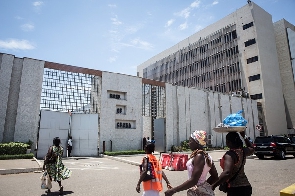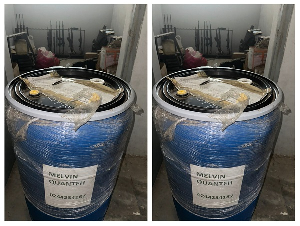Banks will focus on liquidity management this year and not profit-making, due to impacts of the coronavirus pandemic on the pace of economic activity, the Republic Bank Ghana Ltd. finance chief has predicted.
In a time when demand for new loans has slowed and existing borrowers are seeking postponement of their repayments, lenders will have no choice other than to concentrate on managing their cash and other aspects of their balance sheets well, Mr. Benjamin Dzoboku, the general manager for finance and strategy at Republic Bank Ghana said in a telephone interview.
Ghana slashed the forecast for its economic expansion this year to 1.5% from 6.8%, after an initial assessment of impacts from the pandemic in March. Gross domestic product growth in the first quarter slowed to 4.9% from 7.9% in the fourth quarter of 2019, the Ghana Statistical Service said.
“Banks cannot grow their loans book aggressively this year, because both international and domestic demand for goods and services have gone down,’’ Mr. Dzoboku said. “This year is not a year of thinking excess profit but lean profit or break-even."
Ghana banks’ return on assets dropped for a second straight month to 4.3% in March from 4.4% in March 2019. Credit and advances growth declined to 16.5% from 23.1% over the period, according to the Bank of Ghana.
“Initial assessments of the potential impacts from the COVID-19 pandemic indicate that banks’ operations may face challenges with credit extension, loan repayment, and correspondent banking relationships,’’ the central bank said in its March banking sector report. “Looking ahead, the COVID-19 pandemic poses a major risk to asset quality. However, the recently announced policy measures could help moderate any potential deterioration in asset quality.’’
The Bank of Ghana reduced the cash reserve requirement for banks to 8% from 10%, and eased the capital conservation buffer to 1.5% from 3% – essentially lowering the capital adequacy ratio requirement to 11.5% from 13%.
Banks need to reassess sectors that have been severely affected, identify clients who are likely to default and start making the appropriate provisions, Mr. Dzoboku said. Going forward asset quality is critical, which can also help to contain any liquidity pressures, he said.
Banks are already in motion toward a strong liquidity outcome this year. The ratio of core liquid assets to short-term liabilities in the industry advanced for a second straight month to 31.9% in March from 28.8% in January, according to data from the regulator.













